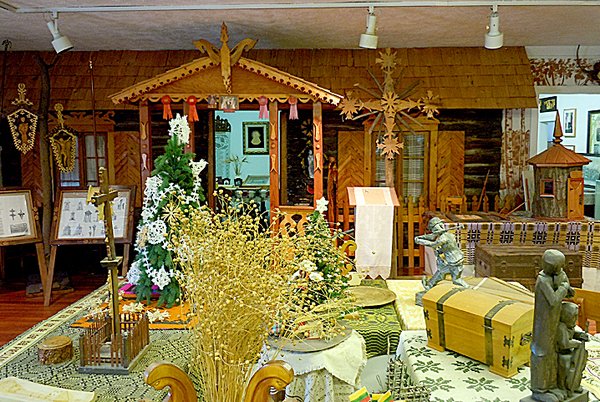BALTIMORE LITHUANIAN MUSEUM
The Baltimore Lithuanian Museum is located on the top floor of the Baltimore Lithuanian Hall. It is open on Lithuanian events such as the Independence Day celebration in March and during the Lithuanian Festival in May. Otherwise it is open by appointment only.
History
As Lithuanians began to settle in the Baltimore area at the end of the 19th century, they realized that their homeland was under a brutal occupation by Czarist Russia. Due to multiple attempts to revolt against their occupiers, the Russians increased their oppression of the Lithuanians, and finally Czar Nicholas I began the Russification of Lithuania, including closing the University of Vilnius, and banning the publication of all books in the Lithuanian language.
Seeing their culture, history, and language were at peril, Lithuanians sought ways to preserve their culture. In the case of the Lithuanian immigrant community in Baltimore, an effort was begun to centralize the collection of cultural artifacts. Various community organizations, working along with the Lithuanian Hall Association, established and maintained its own museum of Lithuanian culture at the Baltimore Lithuanian Hall, in partnership with the oldest Lithuanian Library in the United States, already established at the Lithuanian Hall.
The small but historically important museum was granted full access to the third floor of the Lithuanian Hall. Exhibits there include Lithuanian hand crafts, wood sculptures, weaving samples, historical photographs, amber and amber jewelry, decorative Easter eggs, musical instruments, historical books and posters. There is also a display of historical militaria, equipment, uniforms, medals and maps that cover the time frame from the 18th century through the present.
Since 1978, the museum houses a replica of a Lithuanian farm house, where visitors can learn about the day to day life and traditions in a rustic country home. The museum also houses books not only of Lithuanian history, but also about the history and life of Lithuanian-Americans in the United States. One can see the items used in the protests against Soviet occupation from 1945 to 1990. There are also the straw figures early Lithuanian-Americans created from drinking straws (as the grass straws they used for their folk art back home were not readily available in the US), often used as Christmas ornaments. There is also a collection of Lithuanian way side crosses, large sculptures that many Lithuanian homes had in their front yards, as common as postal boxes are in front of rural and suburban American homes.
The museum is open by appointment, and during the Lithuanian Festival held in May.
For additional information, please contact info@lithuanianhall.com or 410-685-5787.
References
- History of Lithuanian, https://en.wikipedia.org/wiki/History_of_Lithuania#Under_Imperial_Russia,_World_War_I_(1795%E2%80%931918)
- Baltimore Lithuanian Museum – Smithsonian.com https://www.smithsonianmag.com/museumday/venues/museum/baltimore-lithuanian-museum/
An Article by Henry L. Gaidis, curator of the Baltimore Lithuanian Museum
The Baltimore Lithuanian Association facility located at 851-853 Hollins Street, Baltimore, Maryland, 21201, was officially opened on October 17, 1921, as a home of the various Lithuanian fraternal organizations that had been established in the city. The large three-story building soon became the center for all non-religious activities for Lithuanians in the city. The unique location of the hall to the nearby American capital of Washington, D.C., has given the community opportunity to support the cause of Lithuanian independence far greater than larger sized communities. From this building, Lithuanian American activists have not only provided financial aid, but have been an active political force in obtaining restitution, and continued independence and well-being of Lithuania.
It would be hard to find a historic or modern Lithuanian notable that has visited Washington, D.C., and not taken the opportunity to visit the nearby Baltimore Lithuanian community. When Lithuanian President Vytautas Landsbergis first came to America seeking help for the infant Sąjūdis Organization, he quickly turned to the Baltimore community. This small but vibrant community was ready and continues to stand ready to defend America or Lithuania.
The first Lithuanians to visit Baltimore, Maryland, were probably military volunteers that accompanied Generals Thaddeus Kosciusko, the Father of the American Engineers and Casimir Pulaski, the Father of the American Cavalry, who both won great honors during the American War of Independence. General Pulaski recruited his famous Pulaski Legion of Cavalry in Baltimore, which included Americans, Poles, Lithuanians, Irishmen, and Germans. A few of these volunteers are known to have settled in Baltimore, which were followed by a small number of refugees from the 1831 and 1863-1864 Polish-Lithuanian insurrections.
Though these immigrants were historically important, they quickly were assimilated into the American community. The first permanent Lithuanian settlement in the city did not occur until the end of the 19th century. These immigrants were attracted primarily to the tailoring trade. By working hard, they soon started their own businesses and prospered in all fields of economic endeavor. Official census documents indicate that by 1891, there were some 1,000 Lithuanian immigrants living in the city, by 1930 it had increased to 3,105 Lithuanian born and 3,606 American born citizens.
The growing community was later augmented by subsequent waves of immigrants, including about 700 Lithuanian refugees that settled in the city at the end of World War II. It is estimated that some 8,000-10,000 Lithuanian born or descended Lithuanian Americans live in the city or the surrounding area. Keystones of the local community are Saint Alphonsus Roman Catholic Church and the Lithuanian Hall Association. For the past one hundred years these two institutions have been the heart of the Baltimore Lithuanian community.
Included among the contributions of this small ethnic group was financial support given to the historic 1933 “Lituanica” flight across the Atlantic Ocean by Steponas Darius and Stasys Girėnas. Hall members have not only fought for the defense of their ancestral homeland, but their newly adopted nation. Baltimore Lithuanians served honorably in the Civil War, Spanish American War, World War I and II, Korea and Vietnam. Among the various organizations that call the hall home is the Lithuanian National Library founded in 1908, the Lithuanian Athletic Club, and the American Legion, Lithuanian Post 154, veteran’s organization.
Among the notable Lithuanians that have been associated with Baltimore’s activities were Dr. Jonas Basanavičius and Dr. Jonas Šliūpas two of the most noted Lithuanian national revival heroes; Vincas Nagornoskis the famous director and dramatist, Petras Rimša the renowned sculptor and medalist; Nadas Rastenis and Henry Radauskas acclaimed poets; and Lithuanian Scout leader Constantine Jurgėla. Among honored visitors to the building have been Lithuanian Presidents Antanas Smetona and Kazys Grinius, and Lithuanian diplomats Povilas Žadeikis, Stasys Bačkis, and Stasys Lozoraitis. In the modern era the hall has been visited by Vytautas Landsbergis, the heroic leader of the Sąjūdis freedom movement and President of the Supreme Council of the Republic of Lithuania during the hectic 1990 independence period, and Valdas Adamkus, President of Lithuania from 1998 to 2003. Space precludes the listing of more notable names, but the list could go on for paragraphs. To preserve the history of the Baltimore Community, members of the Lithuanian Hall Association established and maintain a Lithuanian museum. This small but historically important museum is housed on the third floor of the building and seeks to preserve the history of Lithuania and the Baltimore Lithuanian immigrant community.
It maintains excellent archives, library, collections of native Lithuanian woodcarvings, artwork, amber jewelry, and various other cultural and historical exhibits. The museum was opened in 1975 thanks to the continued hard work of Algimantas Grintalis, Kęstutis Chesonis (A.A.), Elena Okas (A.A.), Kęstutis Laskauskas (A.A.), and others. Shortly thereafter Henry L. Gaidis, a militaria collector and historian, augmented the museum collection with regular displays from his collection of Lithuanian militaria which included guns, swords, uniforms, and decorations. A major part of the museum's program is educational activities and it regularly presents cultural and historical displays at various ethnic gatherings in Baltimore and the surrounding area. During the 50th year of Soviet occupation the Baltimore Lithuanian Hall museum kept the light of freedom burning through such programs. Included among its many activities is the presenting of historic displays at the Baltimore Community’s annual Lithuanian Festival. Though small in size, the museum, like the community, is full of heart. A ‘must visit’ if you’re doing Lithuanian historical research or visiting in the Baltimore area. The museum staff presently consists of Henry L. Gaidis, Curator, Gintaras Bujanauskas, Assistant Curator, Marytė Patlaba, Treasurer, and Judith Baker, Secretary.
The museum is open on Lithuanian ethnic holidays and through appointment arranged through the Lithuanian Hall Association.






